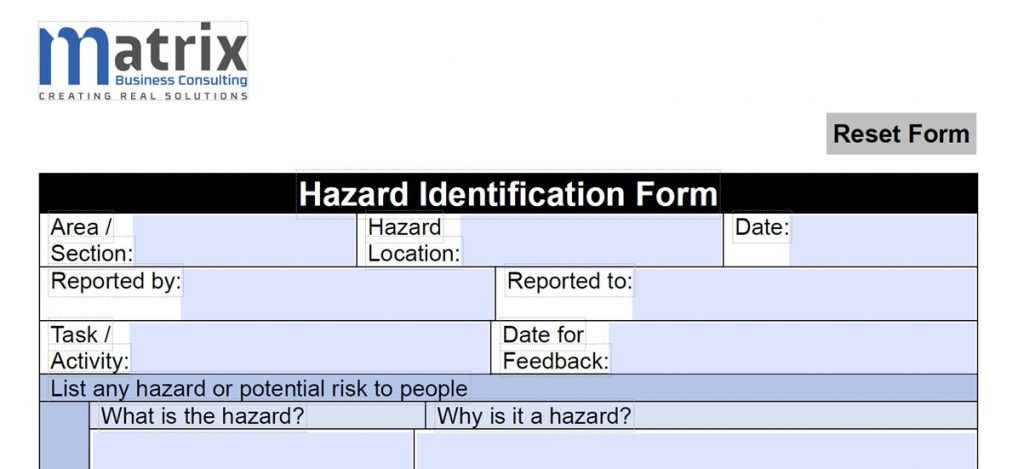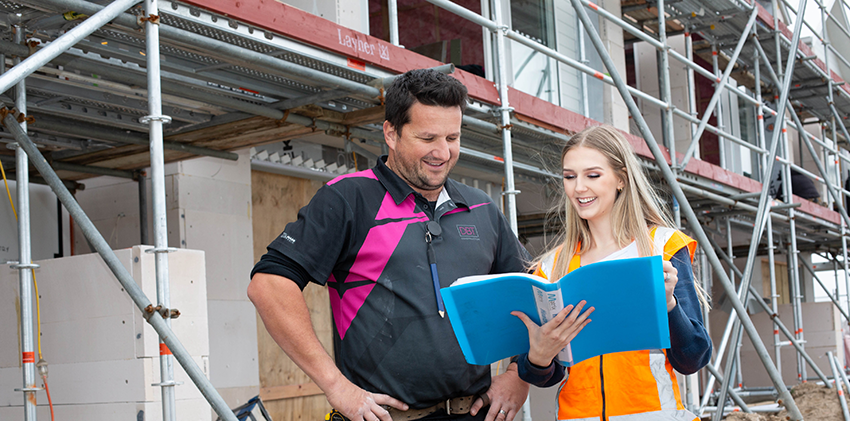
5 Top Tips for Health and Safety in the Workplace
Follow safety protocols: Ensure that you understand and follow all relevant health and safety policies, procedures, and guidelines in your workplace. Consistency is the key. Do not lapse and ignore when a task or equipment is being carried out or used incorrectly. Getting lucky and not having anything go wrong, is exactly that “LUCK”. Do not let chance decide your safety.
Report hazards: Report any potential safety hazards or incidents promptly to your supervisor or safety coordinator. Near misses are especially your best friend. So a staff member almost cut his hand open. Well that is unquestionably better than the real thing happening. So report and act on the near miss, they could help you to see what could be improved in your processes and protocols and possibly save a life.

Use personal protective equipment (PPE): Wear the appropriate PPE for your job, such as high viz, hard hats, safety glasses, or earplugs, to minimize the risk of injury. Once again consistency with the use of PPE is vital. Ensure that it is fit for purpose and readily available to use.
Maintain equipment: Ensure that equipment and tools are properly maintained and used in accordance with manufacturer guidelines and industry standards. Well maintained equipment is not just safer to use, you are less likely to encounter break downs, which cause delays in work.
Stay alert: Pay attention to your surroundings, avoid distractions, and stay focused on your tasks to minimize the risk of accidents and injuries in the workplace. Take 5 each day to assess your work environment. Things can change and new hazards could be introduced. Do not take your work environment for granted.
Human Behaviour and Health and Safety

The role of human behaviour in health and safety is that our actions, decisions, and attitudes can play a big part in creating a safe or unsafe work environment.
For example, if an employee is in a hurry, they may cut corners and take shortcuts that can lead to accidents or injuries. On the other hand, if an employee is aware of the risks and takes the time to do their job safely, they are less likely to be involved in an incident.
Similarly, a positive attitude towards safety can lead to employees being more vigilant and proactive in identifying and addressing hazards. While a negative attitude towards safety can lead to employees being complacent and not taking safety seriously.
Employers can play a role in shaping the behaviour of their employees by promoting a culture of safety and encouraging positive behaviours through communication, training, and incentives.
A common attitude in the New Zealand workplace is the response is that “it is not my problem”, that’s above my pay grade, not my circus not my monkey. It’s not my job. There is a hundred ways to say it but it all creates the same problem. Indifference and a negative attitude to health and safety.
The next attitude that can be easily seen is “that it will not happen to me”. This excuse communicates a mindset that is set on not completing a task safely or shows a person is relying on luck to keep safe while on the job.
Some more common phrases are “I have all my fingers and toes” and “we didn’t need it 20 years ago, why do I need it now?” My favourite one is when someone says “it is all common sense isn’t it? This health and safety stuff is just dumbing down the workplace.” If you have been around long enough, you would have noticed that common sense is not always as common as we would like. A good health safety system documents your procedures so that you do not need to assume on someone else’s level or entire lack of common sense, which is not dumbing them down.
In the last few years, 414 people died due to workplace related risk and we can just about guarantee that none of those people woke up thinking it was going to happen to them.
The longer you are in an industry the more likely you are to fall into this mindset too. Experience makes you better at your job, but it can also create complacency or a higher level of tolerance for risk.
Complacency can be hard to avoid, however having the mindset that an incident or injury will never happen to you can put you at a great risk of sustaining an injury. Believing you are not susceptible to the hazards of the job is a quick way to making you more likely to encounter one. Do not let experience on the job affect your attitude towards taking the correct steps to work safe.
Evaluate your attitude towards safety as well as what hazards or work tasks you may have become complacent towards.
Health and safety is everyone’s responsibility and by turning a blind eye to unsafe situations or not fixing something that could become a hazard because you’ve deemed it as not your job or someone else’s problem is a mindset that’s making your work environments unsafe for you and everyone around you.
Overall, human behaviour plays a critical role in health and safety, as it can either increase or decrease the likelihood of incidents and accidents in the workplace.
Health and Safety: Beyond Paperwork A Proactive Approach to Safety

Introduction:
When it comes to health and safety, many people perceive it as a box-ticking exercise, a mere paperwork process that needs to be completed. However, in reality, health and safety goes far beyond the paperwork. The documentation and processes involved actually serve a purpose, providing evidence of a proactive approach to safety and helping to activate our powerful Reticular Activating System (RAS). In this article, we’ll explore how health and safety paperwork proves a process and how it can enhance our awareness and commitment towards safety.

1. Establishing a Proactive Safety Culture:
Health and safety paperwork, such as risk assessments, incident reports, and safety plans, are not just bureaucratic requirements. They serve as tangible evidence that companies are committed to proactive safety measures. When employees see that their employers invest time and effort in developing safety processes, it sets the tone for a safety-focused culture. This fosters an environment where individuals are more likely to be aware, take responsibility for their own safety, and actively contribute to creating a safe workplace.
2. Documentation as a Guide and Reminder:
Health and safety documentation acts as a guide, outlining best practices and procedures to follow. It serves as a constant reminder of the potential hazards and risks associated with certain tasks or environments. When employees review these documents regularly, they refresh their knowledge and become more aware of the potential dangers they might encounter. This increased awareness enhances their RAS, a part of the brain responsible for filtering and prioritizing information, leading to a heightened focus on safety-related cues.
3. Reinforcing Training and Education:
Health and safety paperwork complements training and education efforts. While training provides essential knowledge and skills, documentation demonstrates that you understand how a tool or process needs to be carried out safely. (These are your Safe Operating Procedures). These documents serve as reference points, allowing employees to refresh their memory, clarify doubts, and ensure they are adhering to the correct procedures. Completing the Staff Competency Form demonstrates that you have taken your staff member through this paperwork and process.
4. Enhancing Hazard Identification and Risk Assessment:
Paperwork associated with hazard identification and risk assessment plays a crucial role in ensuring workplace safety. (Pre Start Site Assessments and Monthly Health and Safety Assessments) By documenting potential hazards and assessing associated risks, companies create a proactive framework for identifying and addressing safety concerns. This process stimulates the RAS, making employees more attuned to hazards and their surroundings. As a result, individuals become more
adept at spotting potential risks, allowing for timely interventions and the prevention of accidents or injuries.
5. Facilitating Continuous Improvement:
Health and safety documentation acts as a foundation for continuous improvement in safety practices. Incident reports, near-miss reports, and regular safety inspections provide valuable feedback for organizations to identify areas of improvement. By analysing these reports and updating safety protocols accordingly, companies can continuously enhance their safety measures.
Conclusion:
Health and safety paperwork is not just an administrative burden; it is a vital component of a comprehensive safety strategy. The documentation process goes beyond compliance, proving a commitment to proactive safety measures. Furthermore, it activates our Reticular Activating System, heightening our awareness and vigilance towards safety-related cues. So, let’s embrace health and safety documentation as more than just paperwork, recognizing its role in fostering a culture of safety, enhancing employee engagement, and ensuring a safer working environment for all.
Health and Safety: Lessons from Laundry

Introduction:
In this article, we will explore the laundry process as an analogy for understanding the importance of health and safety, using the examples of sorting darks and lights and knowing which items should not go into the dryer.
Sorting Darks and Lights:
Just as we separate dark and light-coloured clothes to prevent colour bleeding and maintain their appearance, health and safety practices involve proper segregation of risks and hazards. Different tasks and environments may present unique challenges, requiring distinct safety measures. By understanding the importance of sorting darks and lights, we learn to identify potential risks and tailor safety protocols accordingly. For instance, in a construction site, it is crucial to distinguish between high-risk zones and areas accessible to the public, implementing appropriate safety measures for each.
Knowing What Not to Dry:
Similarly, when doing laundry, we carefully select items that are not suitable for the dryer, such as delicate fabrics or garments prone to shrinkage. In health and safety, it is crucial to recognize situations or conditions where certain practices may be unsafe or detrimental. This includes understanding the limitations of equipment, recognizing personal capabilities, and considering potential risks. For instance, in a manufacturing facility, employees must be aware of the types of machinery they are qualified to operate, and the safety precautions associated with each.
Risk Assessment and Prevention:
Laundry provides a valuable lesson in risk assessment and prevention. When sorting clothes, we identify potential risks (colour bleeding) and take preventative measures (separating darks and lights) to avoid unwanted outcomes. Similarly, health and safety practices involve identifying hazards, evaluating risks, and implementing measures to mitigate or eliminate those risks. Whether it is conducting regular safety inspections, providing training programs, or implementing safety protocols, proactive risk assessment and prevention are crucial elements of maintaining a safe and healthy environment.
Communication and Collaboration:
Doing laundry efficiently often requires teamwork and effective communication. For example, ensuring everyone in the household knows which items should not go into the dryer helps prevent accidental damage. In health and safety, effective communication and collaboration are equally vital. Employers and employees must actively communicate about potential hazards, safety protocols, and best practices. By fostering an open and collaborative environment, organizations can create a strong safety culture that benefits everyone involved.
Conclusion:
Health and safety should never be taken for granted, and valuable lessons can be learned from everyday tasks like doing laundry. By examining the sorting of darks and lights and understanding what items should not go into the dryer, we gain insights into risk management, prevention, communication, and collaboration. Just as we handle laundry with care to achieve the best outcomes, prioritizing health and safety in all aspects of our lives is essential for a safer and healthier environment.
"Don't Get Caught with Your Pants Down” The Vital Importance of Active Engagement in Health and Safety

In the hustle and bustle of our daily lives, health and safety often take a back seat. We get caught up in our tasks, routines, and responsibilities, sometimes forgetting that accidents and emergencies can happen when we least expect them. This article is a reminder that neglecting health and safety is akin to walking around with our pants down; sooner or later, we’re bound to get caught out. To avoid such embarrassing and potentially life-altering situations, it’s crucial to actively engage with health and safety measures in every aspect of our lives.
Understanding the Risks
Health and safety are not just buzzwords or bureaucratic red tape. They are the cornerstones of a safe and productive society. Failing to actively engage with health and safety can lead to various consequences, from minor inconveniences to catastrophic events. Here are some reasons why you don’t want to be caught unprepared:
Accidents Happen: Life is unpredictable. Accidents can occur at any time, in any place. From slipping on a wet floor to a car collision, the consequences of neglecting safety can be dire.
Health Impact: Ignoring health and safety guidelines can have long-term health consequences. Exposure to harmful substances, improper lifting techniques, and disregard for personal protective equipment can lead to chronic illnesses and injuries.
Financial Fallout: Accidents often come with hefty medical bills and legal expenses. Without proper insurance or safety measures in place, you could find yourself in financial ruin.
Reputation Damage: In a professional setting, failing to adhere to health and safety standards can tarnish your reputation and that of your organization. Clients and employees alike will lose trust if they perceive negligence.
Actively Engaging with Health and Safety
To avoid the embarrassment and negative consequences of being caught off guard, here are some essential ways to actively engage with health and safety:
Education: Stay informed about potential risks and best practices for mitigating them. Attend safety training sessions, read safety literature, and encourage your family and colleagues to do the same.
Regular Inspections: Whether it’s your workplace, home, or vehicle, conduct regular safety inspections. Identify potential hazards and take action to eliminate or mitigate them.
Use the correct PPE: Always use the appropriate PPE (Personal Protective Equipment) for the task at hand. Helmets, gloves, goggles, and other protective gear are not optional; they are essential.
Risk Assessment: Before embarking on any activity, assess the risks involved. Consider what could go wrong and plan accordingly. This proactive approach can prevent accidents before they happen.
Emergency Preparedness: Develop emergency response plans for your home and workplace. Ensure everyone knows what to do in case of fire, natural disasters, or medical emergencies.
Lead by Example: Whether you’re a parent, manager, or team leader, set a good example by consistently following safety guidelines. Your behaviour will influence those around you.
Report and Investigate: If you notice safety violations or near misses, report them promptly. Investigate the causes and implement corrective actions to prevent recurrence.
In conclusion health and safety should never be treated as an afterthought or inconvenience. Neglecting health and safety is a risk we simply cannot afford to take. By actively engaging with health and safety measures, we protect ourselves, our loved ones, and our livelihoods. So, don’t wait until you’re caught with your pants down; take proactive steps today to ensure a safer, healthier future for yourself and those around you.
The 3 “P’s” to Health and Safety

“I hear people say all the time that health and safety is really just paperwork. So let’s drill into this and cover the 3 ‘P’s’.”
Paperwork: The Foundation of Health and Safety
The first “P” in the world of health and safety is paperwork. It’s undeniable that documentation plays a crucial role in establishing a robust health and safety system. Think of it as the foundation upon which the entire structure is built. Without it, you essentially have no tangible evidence of a health and safety system in place that you can produce when needed. So yes, it’s true, health and safety is paperwork.
The paperwork involved in health and safety includes a wide array of documents: risk assessments, safety procedures, incident reports, training records, and more. These documents serve as a blueprint for how to navigate the complex landscape of safety regulations and standards. They provide a roadmap for identifying potential hazards, mitigating risks, and ensuring the well-being of employees and stakeholders. However, it’s important to recognize that paperwork alone is not enough. It’s the starting point, the groundwork, but it must be followed by action to be effective.
Process: Turning Paperwork into Practice
The second “P” stands for process. The paperwork creates a structured process for how you can manage health and safety in your workplace. Having a well-documented system is one thing, but knowing how to put that paperwork into practice is equally, if not more, important.
A well-defined process ensures that safety protocols are not just words on paper but actionable steps that are ingrained into the daily operations of an organization. It guides employees on how to carry out their tasks safely and efficiently. It also enables the swift response to emergencies or incidents, minimizing potential harm. To effectively manage health and safety, organizations must ensure that their employees are not only aware of the safety procedures but also trained to implement them. This proactive approach not only protects individuals but also safeguards the reputation and stability of the company.
Psychology: Raising Awareness and Preventing Incidents
The last “P” is psychology, and it’s a game-changer in the world of health and safety. The activity of using your health and safety system creates a greater awareness of it. When you are engaged in a regular way using it, you naturally become more alert, and thus, less likely to have a careless incident. This phenomenon is known as activating your reticular activating system (RAS).
Consider this simple analogy: If you just bought a VW Ute, you start to notice them more on the road. It’s not that there are suddenly more VW Utes; it’s just that your brain has become attuned to recognizing them. Similarly, when you start to talk and think about health and safety, you start to become more aware of safety-related issues in your environment.
The psychology behind this awareness is powerful. It means that the more an organization emphasizes and prioritizes health and safety, the more its employees will be vigilant about it. They will actively seek out potential hazards, correct unsafe practices, and take ownership of their well-being and that of their colleagues.
In conclusion, health and safety are indeed supported by paperwork, but they are far more than just administrative documents. They encompass processes and psychology that permeate an organization’s culture. By acknowledging and embracing the three “P’s” – paperwork, process, and psychology – organizations can create a safer and more aware workplace, ultimately reducing accidents and incidents. So, next time someone claims that health and safety is all about paperwork, remind them that it’s a complex, interconnected system designed to protect and empower us all.
Be Safe These Christmas Holidays
Drive Safely
Alcohol
Hydration
Mobile Phones
Lets’ keep ourselves safe on the roads during the holiday period.
Do not forget that if we drive a sign written vehicle, that the public get to see our brand when we become that impatient driver. Drive to survive. Our advertising does not stop while we are on holiday.
Enjoy your relaxation. But remember that alcohol and driving do not go well with each other. Have a sober driver or get a taxi to the party and back to home. You do not want to get caught on the road over the limit and possibly loose your licence or car, just before you need it again for the start of work.
Stay hydrated while driving in the hot weather. Air con and hot dry weather can dehydrate you, which can make you tired when driving. So stop and have a drink if you are making a longer trip somewhere.
Stay off your phone while you are driving. I like a quote I saw in town which says
“ Let your driving distract you from your phone.”




Let’s not forget that the holiday season is a great time to relax, but it is better to remember these basics while driving. Your family needs you home and you do not need a serious injury that prevents you from returning to work after the holidays. Merry Christmas and have a safe one.
